Tactical Urbanism: A community changemaker’s guide to collaboration in the 21st century city

In the twenty-first century, cities worldwide must respond to a growing and diverse population, ever-shifting economic conditions, new technologies, and a changing climate. Short-term, community-based projects—from pop-up parks to public space activations, to temporary street redesigns—have become a powerful and adaptable new tool of urban activists, planners, and policy-makers seeking to drive lasting improvements in their cities and beyond.
These quick, often low-cost, and creative projects are the essence of the global Tactical Urbanism movement. Whether creating vibrant plazas seemingly overnight or developing new policies and programs to engage and empower more city-citizen collaboration in the implementation process, Tactical Urbanism offers a way to gain public and government support for investing in permanent projects, inspiring residents and civic leaders to experience and shape urban spaces in a new way.
This exciting ICTC keynote presentation will provide an overview of the Tactical Urbanism movement supported by numerous case studies illustrating how this new approach to neighborhood building and project delivery can help Australian communities of all sizes make positive change happen fast.
Mike Lydon is a Principal of The Street Plans Collaborative, an international award-winning planning,design, and research-advocacy firm based in Miami, New York City, and San Francisco. Mike is an internationally recognized planner, writer, and advocate for liveable cities. NPR, The New York Times,CNN Headline News, ABC News, City Lab, Smithsonian Magazine, Salon, Next City, and Architect Magazine have featured his work, among many other national and international publications.
Mike collaborated with Andres Duany and Jeff Speck in writing The Smart Growth Manual, published by McGraw-Hill in 2010 and named one of the top ten planning books of 2010 by Planetizen. He is also the creator and primary author of the The Open Streets Project (2012), the co-creator and editor of The Mercado Project: Lessons from 20 Markets Across South America, and the globally acclaimed, four-volume Tactical Urbanism digital publication series (2011 – 2014). With Tony Garcia, Mike is the recipient of the 2017 Seaside Prize and co-author of Tactical Urbanism: Short-term Action for Long-term Change, published by Island Press in 2015 and also named by Planetizen as one of the top 10 planning books of the year. Most recently, Mike co-authored The Tactical Urbanist’s Guide to Materials and Design, published by Street Plans with the support of the Knight Foundation.
Before launching Street Plans in 2009, Mike worked for Smart Growth Vermont, the Massachusetts Bicycle Coalition, and AnnArbor’s Get Downtown Program. From 2006 – 2009 Lydon worked for Duany Plater-Zyberk and Company (DPZ), an international leader in the practice of smart growth planning, design, and research techniques.Mike received a B.A. in American Cultural Studies from Bates College and a Masters in Urban Planning from the University of Michigan. Mike lives in Brooklyn, New York and he encourages you to trade four wheels for two.
& President, Downtown Lower Manhattan Association, USA
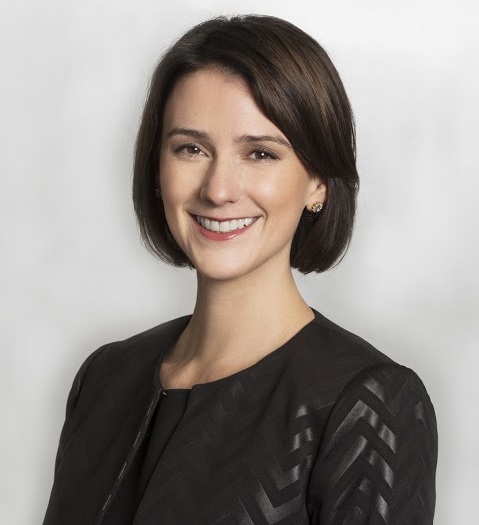
Jessica will discuss how the organization helped transform this commercial hub into a thriving live/work/visit/play community. Despite the devastation suffered on 9/11 and the impacts of the most recent American financial crisis, the neighborhood around Wall Street and the World Trade Center has emerged as one of New York City’s hottest, thriving, and most dynamic areas.
Lower Manhattan’s success grew out of partnerships forged between the district's property owners, businesses, cultural institutions and elected officials. With the Alliance working as the primary driver and convener, these partnerships led to smarter city planning, huge investments in transportation infrastructure, the creation of tax incentives, and other economic development tools that have diversified and strengthened the area. Today, the Alliance continues to build on these partnerships to use video and social media in creative ways, produce award winning events and programs, and successfully position Lower Manhattan as a premier destination for businesses, tourists, and residents.
Lappin’s presentation will cover:
- Two concrete examples of large scale community based city planning efforts;
- Targeted and unique economic development programs, including a first of its kind “collaboration” space where people go to learn, network, and get things done downtown;
- Marketing initiatives that can reshape a neighborhood's narrative, brand it as a compelling destination, and appeal to locational decision makers;
- Experiential place based programming that enlivens a neighbourhood and supports local businesses.
A lifelong New Yorker, and recent Crain’s “40 Under 40” honoree, Ms. Lappin has a distinguished record in civic life and public service. Since taking the helm of the Alliance in February 2014, Lappin has emerged as the voice of the downtown business community and ensured that the BID remains at the forefront of efforts to shape the neighborhood. Under her leadership, the Alliance has advocated successfully for incentives to improve the business climate, significantly expanded its free public WiFi network, produced award winning marketing videos, instituted a district-wide solar-powered recycling program and helped secure nearly $100 million in resiliency funding for Lower Manhattan. Lappin has also led the organization’s economic development efforts to create a first-of-its kind innovation hub, workspace and collaboration center called Lower Manhattan HQ.
Prior to her tenure at the Alliance, Lappin was elected to serve two terms in the New York City Council, representing the Upper East Side, East Midtown, and Roosevelt Island, and was praised by the New York Times for her “steely resolve, dedication, and energy.” She played a key role in bringing the Cornell Technion Applied Science and Engineering Campus to Roosevelt Island, oversaw the approval of over 20,000 new public school seats citywide and 5 new schools on the East Side, helped keep 100 senior centers from closing, expanded the city’s recycling efforts and spearheaded the successful development of four new waterfront parks.
The Aspen Institute, a renowned international think tank, selected her as a Rodel Fellow in 2011. The Rodel program is focused on transcending political partisanship and addressing overarching questions of leadership and effective governance.
She also serves on the Steering Committee of the Association for a Better New York (ABNY) and the boards of the FDR Memorial and Four Freedoms Park, Battery Conservancy, and as an Ex Officio member of New York City Center and NYC & Company.
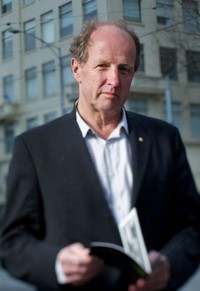 Melbourne has over the last 30 years come from relative obscurity to one of the World’s leading cities – this has not occurred through good fortune but rather through a conscious strategy of incremental change. While like most cities there have been major projects the day to day actions across many disciplines have ensured a steady process of change. This presentation will look at the balance between continuity and change and how density, mixed use, local character, high quality public realm, adaptability and connectivity have been combined through integrated action and public participation to produce good social cohesion, financial viability and environmental sustainability.
Melbourne has over the last 30 years come from relative obscurity to one of the World’s leading cities – this has not occurred through good fortune but rather through a conscious strategy of incremental change. While like most cities there have been major projects the day to day actions across many disciplines have ensured a steady process of change. This presentation will look at the balance between continuity and change and how density, mixed use, local character, high quality public realm, adaptability and connectivity have been combined through integrated action and public participation to produce good social cohesion, financial viability and environmental sustainability.While much of this success has been achieved in the central area there are increasing signs that the future of Metro Melbourne, if it follows a business as usual approach, will not retain its title as the world’s most liveable city. So what needs to change and how can the planning system assist or hinder this change?
Gary Horwitz, Head Of Retail, Investment Management, Lendlease & Board Member Shopping Centre of Australia
Creating streets in malls - the new normal
Historically, the intention of shopping mall developers has always been to draw shoppers to a destination based on the premise that convenience and offer dictates over location. Whether you believe John Graham or Victor Gruen founded the original design of introducing large scale department stores, flanked by smaller retail stores, the sixty year old shopping mall concept is a thing of the past. The new generation of customers yearn for more than the convenience of a balanced retail offer. They want an inspirational and a sensory experience when walking through the doors of a mall.
The world does not stand still. In fact it is moving faster than ever before. Everyone involved in predicting the future of retail places needs to contemplate how quickly human beings are changing their habits and desires to truly gain an understanding of how the shopping mall will evolve over the next sixty years.
From markets, to high streets, to urban retail, to enclosed shopping malls, to town centres, to open air shopping malls, to mixed use precincts and back to markets is living proof we continue to go full circle in life and that communities love to gather in exciting places.
Streets in malls will be the new evolution.
Get ready.
Gary has over 30 years’ experience in the retail industry. He has a passion for developing distinct retail destinations and enhancing public spaces. Gary leads initiatives that enhance place-making and social sustainability across Lendlease’s retail asset management and urban regeneration portfolios.
Gary has created unique retail precincts including award winning Lakeside Joondalup and Darling Quarter; retail development bids on the Barangaroo and RNA Showgrounds projects; and was instrumental in the vision and delivery of Melbourne’s greenfield regional shopping centre site, Craigieburn Central.
Over the past two years Gary has led the retail and ground plane component of Australia's largest $6billion Urban Generation project, Barangaroo South. Opened fully leased with over 90 retailers, it has captured the hearts and minds of commercial tenants, visitors and tourists to the precinct. His current redevelopment projects include newly opened Macarthur Square and Sunshine Plaza due for completion late 2018.
Prior to joining Lendlease, Gary was a successful retailer, having been part of the Australian retail landscape for over 20 years, as Founder and Director of popular homewares/food retail concept Bayswiss – which grew to a national chain of 30 stores.
Innovation in Digital & Physical: Two worlds become one
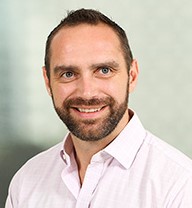
The unprecedented rise in the digital integration and the impact it is having on our everyday lives, the places we work, play and live is felt by everyone in this room today. However to date, we have been able to separate the physical environment from the digital. We have been in control to be able to switch off technology when we choose.
Do we embrace the inevitable and allow the 2 worlds to become one?
Will mixed reality enhance the experience we have with our towns and cities?
With 20 years of global experience working in the UK, US, SE Asia and now Australia, Robbie is helping to develop omni channel solutions for his clients, which include, Priceline, NAB, ANZ, Siam Bank, Federal Govt and Telstra. He is also an industry commentator and speaker (Good Design Australia, AIMIA, Worktech, ADMA, CX Aus). Finally, he is avid supporter of diversity and inclusion in the workplace, and is the lead Partner for Globe@Deloitte.
He was recently recognised by the Australian Financial Review as one of the top most influential LGBT executives in Australia. Robbie has a Masters in Urban Design and Business Administration
Big Cities vs Regions - Is it the end for regional cities?
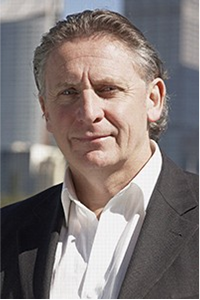
Globalisation and technology are driving the service sector in Australia and increasingly centralising economic development, jobs and investment in capital cities. This paper analyses the key service sector drivers including health, finance, tourism, professional and technical services, information technology and demonstrates that the regions have ‘big losses’ and that this trend is likely to continue.
The paper differentiates between peri-urban areas, regional cities and towns and concludes that without major positive policy intervention two things are likely to happen:
1. Many regions will economically decline
2. Capital cities will become increasingly ‘uneconomic’ due to their size.
He has over 30 years experience delivering business and property strategy, precise forecasting of niche trends, successful facilitation of strategic outcomes and delivery of major projects and policies.
Brian commands an unparalleled, on -the-ground knowledge of property markets across Australia, having worked extensively and regularly in all capital cities and key regional markets.
Brian’s third book Destructive Cities analyses how the service sector, globalisation and technology can reshape Australia. The book builds on Australia 2050: A Big Australia (2010) and Beyond the Fringe (2012) and informs transformational rather than trend thinking.
The importance of collaboration, innovation and leadership when transforming key precincts in an urban environment
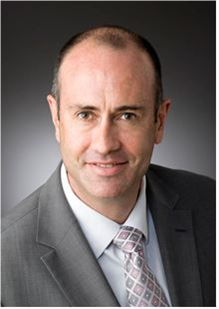 A great town centre needs to be attractive to both people and business.
A great town centre needs to be attractive to both people and business.
The Victorian Planning Authority (VPA) brings our experience from large scale planning on big sites to smaller scale town centres that enable the delivery of great places across urban renewal sites, Greenfields and Regional areas.
We are leading the planning of over 100 local town centres – including areas like Altona North, Selandra Rise and several other greenfield areas, and we have done research into what makes these places attractive to work in, visit, shop and linger.Studies conducted by the VPA, VicHealth, RMIT, the City of Casey and the Planning Institute of Australia have confirmed the importance of growing jobs in Melbourne’s middle and outer suburbs to foster greater communities and bring health benefits.
Studies have shown our greatest challenges and opportunities are in delivering 20 minute neighbourhoods to foster community spaces that give people a sense of place. We have also conducted research into what the current and future disruptors are and how these may have spatial impacts.
In both Greenfields and brownfields the VPA has led the way by forging partnerships and creating the right guidance for the private sector to build comfortable and attractive town centres. This means creating flexible spaces that can be enjoyed now and adapted for the future Stuart Moseley is a respected practitioner, values-driven leader and communicator, with a strong track record of leading organisational change encompassing strategy, culture and delivery.
With more than 30 years of experience in planning, urban management and project delivery, including as Chief Executive of Adelaide Council, Stuart is a reformer with a passionate advocate for outstanding urban environments.Stuart has most recently been the Deputy Director General (Planning Group) for the Queensland Department of Infrastructure, Local Government and Planning, where he was responsible for delivering flagship reforms.
This included the introduction of new planning legislation and a new regional plan for South East Queensland, concentrating on new land supply metrics and a new focus on affordable living and design quality.
He is a Registered Planner and a Fellow of the Planning Institute of Australia and has previously served as National Vice President of the Urban Development Institute of Australia (UDIA).Stuart is also a graduate member of the Australian Institute of Company Directors.
Peter Smith, CEO, City of Port Phillip
Public Sector Leadership: Creating new value for cities
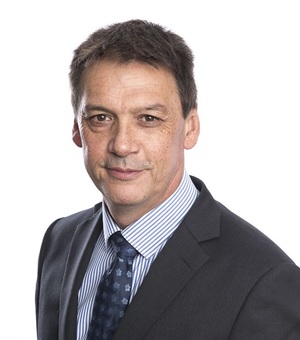
The impact of rapid urbanisation is creating unprecedented pressure on both the hard and soft infrastructure of Australian cities and this is resulting in increased competition and conflict within many city communities. Examples, include conflict between densification and liveability, increasing competition for the use of public space, roads and streets and the impact of gentrification on social and cultural heritage. Disruption to industry, retail and services driven by technological change is also impacting on many city economies causing further conflict as businesses struggle to make the transition to new industries or attempt to compete with traditional business models that are no longer viable.
To address this conflict, governments at all levels cannot rely solely on traditional city governance levers of planning policy, rates, fees and charges and local laws, particularly as these may result in increased conflict. Rather, new forms of city and public sector leadership are required to build the community’s capacity to co-create and find collaborative solutions that capitalise on the opportunities that change brings at a city, neighbourhood and place level. This presentation briefly explores the issues and provides insight into the leadership capabilities and capacity that governments will require into the future.
Peter has over 25 years’ experience working in the public sector at all three levels of Government in Australia where he has held senior management roles in the Federal Government, NSW and SA State Governments and in Local Government in both Adelaide and now as the CEO at the City of Port Phillip in Melbourne, Victoria.
Peter is passionate about community engagement and building community capacity and resilience through co-creation with Governments and has a relentless focus on achieving better outcomes for the communities that he works with and on providing better value for customers and recipients of Government services. He has spent many years reforming Government services to deliver better value and is a leading advocate of place based approaches to achieve this.
Peter also has considerable experience as a Board Director on Government and NFP Boards, including past chair of Place Leaders Asia Pacific. Most recently he worked as an Asia Pacific representative on the international Future of Places Advisory Board which worked directly with UN Habitat to recognise and establish the importance of public space within the new Urban Agenda of the UN.
David Hall, Chief Operating Officer, MAB Corporation
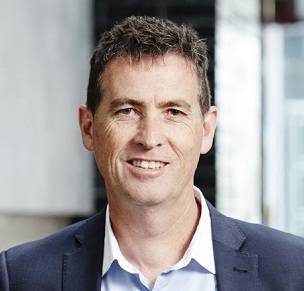 The ups and downs of planning and creating places
The ups and downs of planning and creating places
Planning for places that are vibrant and economically sustainable requires a robust plan, together with patience along the journey. The phases of development from pioneering stages through to sustainability need to be considered carefully. The presentation will focus on three quite distinct case studies and outline the ups and the downs of the projects and some observations about the ingredients for success. The three case studies include:
NewQuay commenced with a vision in 1999 to transform Melbourne’s disused and desolate harbour frontage into a waterfront precinct. MAB has created 2,500 contemporary apartments (4,700 once complete), a promenade with over 25 restaurants, bars, and cafes, a spectacular 80 berth marina plus a 60,000 m2 business precinct.
University Hill commenced in 2003 with a vision to create a thriving community offering a balance between lifestyle, retail, business and the environment – a vibrant place where people could live and work. University Hill is now home to 2,500 residents. The business precinct accommodates 255 businesses, employing 3,000 people and complemented by a thriving street-based town centre, multiple parks and wetlands.
Merrifield is a 770 hectare project set to become Victoria’s largest masterplanned mixed-use development and is an innovative project helping to shape Melbourne’s future with a business park, a city centre and several residential precincts comprising 5,000 homes. The long-term goal of the project is to deliver housing for more than 15,000 residents as well as 25,000 new jobs.
MAB has a track record of designing places across Melbourne over the last twenty years (from inner city development at NewQuay at Docklands and University Hill in Bundoora through to growth area planning at Merrifield in Melbourne’s North) working across various jurisdictions, design agendas and planning frameworks to plan and create places for work and living.
David commenced with MAB in 2003 as General Manager Business Parks and was responsible for a portfolio of industrial and mixed-use projects, including Northcorp, Global, National, Translink Business Parks and the mixed-use University Hill project. David also held the role of General Manager Major Projects, with a key focus on the planning and delivery of the 770 hectare mixed-use Merrifield project. In December 2009, David was appointed as MAB’s Chief Operating Officer.
Carlton Connect Innovation Precinct: Australia's first innovation precinct
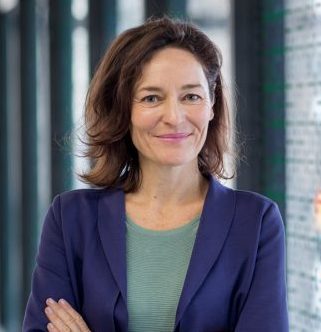
Her other qualifications are a BA and LLB from the University of Melbourne and a LLM from Monash University.
Culture Clash: Flexible workspace, coworking and the future
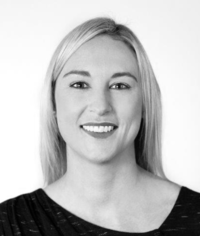 Millennials are a hot topic. The smashed avocado debate coined by Bernard Salt, highlights the multi-generational conflict that exists today in our culture, both socially and in the office. Currently, nearly ¼ of the Australian Millennial workforce is in senior positions and by 2025, Millennials will represent 42% of the Australian workforce. With this, Millennials are having an impact on key decisions around commercial real estate, the future workplace and the very nature of work itself particularly around workplace design.
Millennials are a hot topic. The smashed avocado debate coined by Bernard Salt, highlights the multi-generational conflict that exists today in our culture, both socially and in the office. Currently, nearly ¼ of the Australian Millennial workforce is in senior positions and by 2025, Millennials will represent 42% of the Australian workforce. With this, Millennials are having an impact on key decisions around commercial real estate, the future workplace and the very nature of work itself particularly around workplace design.
Prior to joining Knight Frank, Kimberley had previously worked at JLL with roles based in New Zealand, London and Melbourne. While in London, Kimberley was a senior analyst in the office leasing team and was responsible for all research outputs, providing high quality reports covering the office market combined with presenting to clients.



